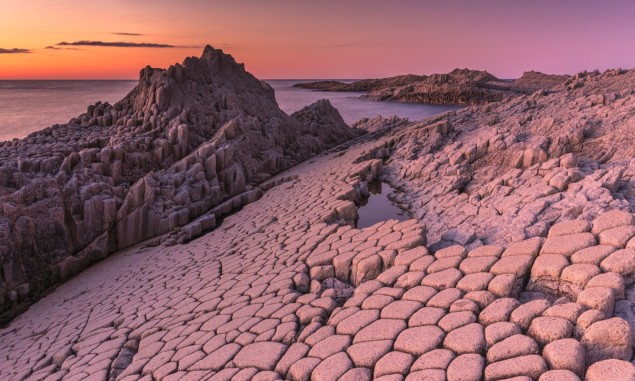
Sprinkling powered basalt over natural ecosystems would remove vast amounts of carbon dioxide from the Earth’s atmosphere while also improving soils. That’s the finding of a new study that evaluates this proposed geoengineering scheme and estimates the costs involved.
Worldwide, nations are pledging to reach net zero emissions of greenhouse gases by 2050, if not earlier. But even in best case scenarios for renewable energy and industrial decarbonization, it looks certain that significant carbon dioxide emissions will continue for decades. Therefore, most proposed routes to net zero also bank on our ability to capture carbon – at source or directly from the atmosphere – and store it securely over the long term.
An obvious option is to plant more trees, which brings other ecological benefits. But there are parts of the world where soils are unsuitable, or new forests would compete with other land uses such as agriculture. Another possibility is carbon capture and storage (CCS) whereby carbon is extracted from industrial exhaust gases or directly from the air and then pumped into rocks underground. The reality, however, is that CCS facilities currently store just a few million tonnes each year from annual global emissions of 35 billion tonnes.
Enhanced weathering
A new study described in Nature Geoscience and led by Daniel Goll at the University of Augsburg in Germany considers a different approach known as enhanced weathering. The idea is to boost the natural process by which carbon dioxide in precipitation reacts with soils and rocks to form bicarbonate ions, which eventually find their way into oceans via rivers. Adding basalt dust to soils increases the surface area available for these reactions, speeding up this chemical weathering process and drawing down more carbon.
At the same time, amending soils with basalt makes them more productive – boosting the carbon sink – and improves drainage and reduces acidity levels. “We know that plants can enhance the weathering of minerals, so we believe there might also be an acceleration of this weathering process when more vegetation is present,” says Goll.
Goll’s team used a land surface model to the simulate the effects of applying 5 kg/m2 of basalt dust over a vegetated area of 55 million square kilometres (about one third of the land on Earth). They found it has the potential to remove 2.5 billion tonnes of carbon dioxide per year, where roughly half was stored in the biomass. The biggest effect was predicted for tropical regions where soils are often impoverished compared to higher latitudes.
Realistic costs
Costs for distributing basalt on a sufficiently large scale would include mining and crushing the rock, transport and distribution. Goll says that a cost of roughly $150 per tonne of removed carbon dioxide is realistic, assuming that basalt is applied to land reasonably close to human infrastructures using aircraft. That compares with $5–50 per tonne for afforestation and re-forestation, $100–200 for bioenergy with carbon capture and storage and $100–300 for directly capturing carbon from the air – all figures estimated in a 2017 paper in Environmental Research Letters.
“The good thing about crushed silicate rock, such as basalt, is that it can be applied to managed land – crops, grazing land, forest – without tying up the land,” says Peter Smith, a soil scientist at Scotland’s University of Aberdeen.
Impacts on human health
Field trials of enhanced weathering are taking place in the UK, Germany, the US, Australia and Malaysia . Jessica Strefler, a researcher at Germany’s Potsdam Institute for Climate Impact Research, says studies should assess impacts of basalt dust on human health, whether heavy metals are present, and the risks of overloading land and water ecosystems with nutrients. “All carbon removal options are limited in some way, and the negative side effects increase with deployment,” she says.

Could the breakdown of rocks mitigate climate change?
Jens Hartman, a biogeochemist at Germany’s University of Hamburg, says that one potential positive side effect of amending soils with basalt is that bicarbonate ions might help to counteract ocean acidification. “Future research should also assess how enhanced weathering can be combined with biochar (charcoal) to improve soil hydrology, making soils and plants more resistant to droughts,” he added.
Goll’s team is working with economists to get a clearer picture of deploying basalt at scale. It is the most common volcanic rock type on Earth and near-surface basalt reserves are available on all continents. The researchers suggest that basalt mining could help to replace jobs in the declining coal mining sector, playing a role in the just transition away from carbon-intensive industries.
